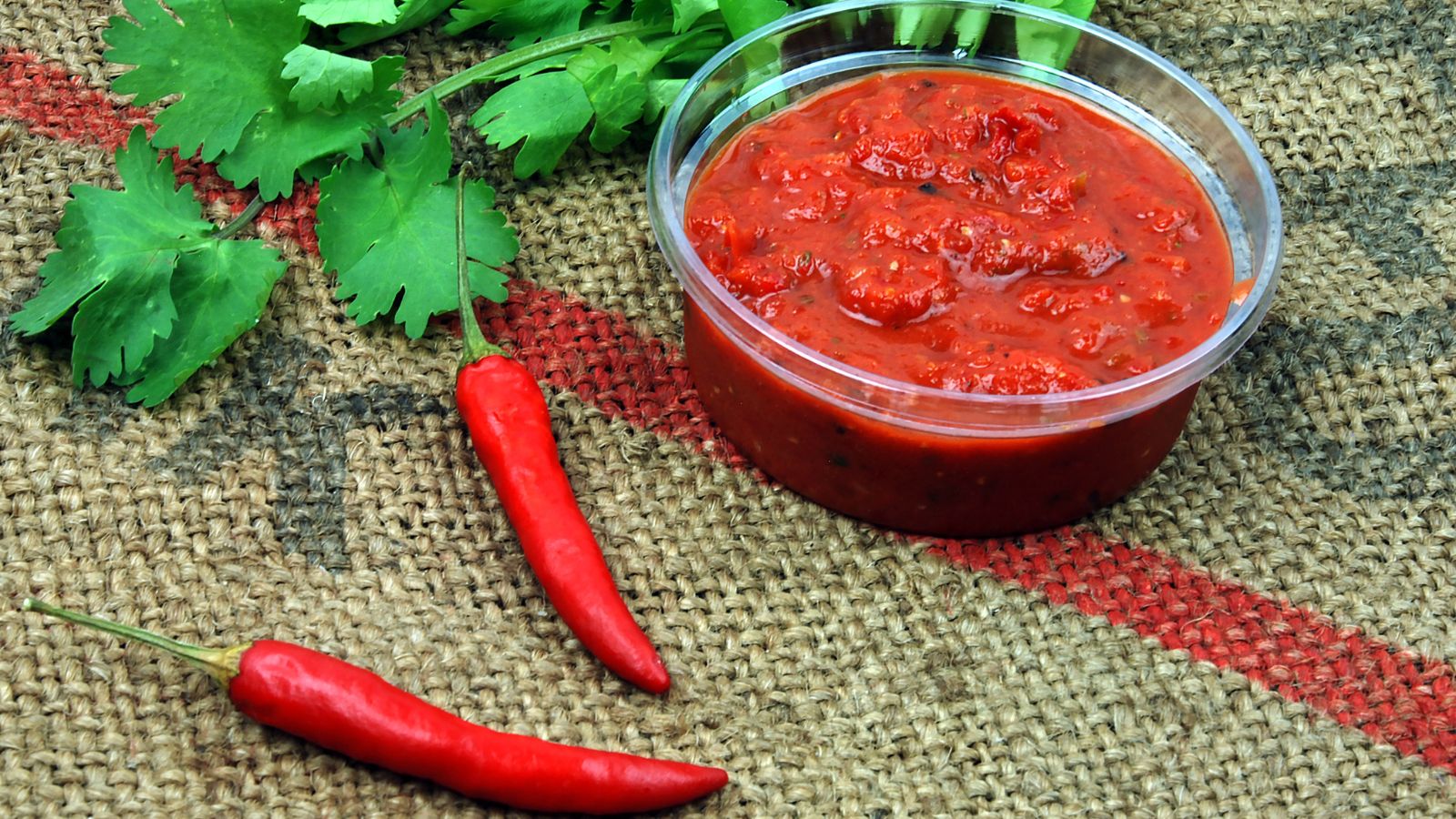
Is Salsa Gluten Free? A Simple Guide to Safe Ingredients
Photo Credit: Canva Pro
Most homemade salsa is naturally gluten-free because it uses simple ingredients like peppers, onions, and tomatoes. Others, like store-bought salsas, may have gluten because of extra ingredients or contamination from other foods.
Some safe salsa options are listed in this article, along with gluten-free eating tips and sauces and ingredients to stay away from. Knowing what to look out for is important if you have celiac disease or are sensitive to gluten and want to enjoy salsa without feeling sick.
Is Salsa Gluten-Free?
Photo Credit: Canva Pro
Since salsa is made with simple things like tomatoes, onions, and chilies, it doesn't usually contain gluten. However, some store-bought versions might have gluten in them or be made on the same machines as gluten-containing foods. It is safest to know what to look for.
Why Most Salsa Is Gluten-Free
Most fresh or homemade salsa typically doesn’t contain gluten, though some recipes may include sugar or preservatives.
-
Simple ingredients: Fresh tomatoes, onions, garlic, lime, and chili are naturally gluten-free.
-
No grains: Most salsa doesn’t contain wheat, barley, or other gluten containing grains.
-
Safer choices: Chunky salsa and only salsa made with clean labels are usually safe.
-
Gluten free labeling: Always check the jar for certification and an allergen statement.
Hidden Gluten in Commercial Salsa Brands
There may be gluten sources in some store-bought or restaurant-style salsa that you can't see.
-
Cross-contamination risk: Many salsas are made on the same lines as other gluten items.
-
Sneaky ingredients: Additives like modified food starch or flavored vinegar may occasionally come from wheat, especially outside the U.S.
-
Trusted brands: Go for tested and reliable gluten free salsa brands like Tostitos brand or Green Mountain Gringo.
-
Check the label: Look for brands that pass finished goods testing and list ingredients clearly.
What Sauces Are Not Gluten-Free?
Photo Credit: Canva Pro
If you don't eat gluten, you can't always eat certain sauces. Some of them are made with thickeners, soy, or wheat. If you're not sure, stay away from it or check a reliable gluten-free list.
Gluten-Filled Sauces to Avoid
Though they might not taste like it, these sauces often contain gluten-containing ingredients.
-
Soy sauce: Unless labeled gluten-free, it often contains wheat.
-
Malt-based sauces: Malt vinegar, hoisin, and teriyaki sauce are not gluten-free.
-
Creamy sauces: Some contain flour or wheat-based thickeners.
-
Unlabeled products: Sauces from a convenience store without proper gluten free labeling should be avoided.
Finding Safe Alternatives
Nowadays, you can find a lot of safe and tasty gluten-free sauces.
-
Certified options: Choose sauces that pass finished goods testing and show allergen info.
-
Soy-free choices: Look for soy free sauces made with coconut aminos or tamari.
-
Clean labels: Skip products with vague terms like "spices" or "natural flavors" unless clarified.
-
Gluten free products: Brands from a strict parent company may offer better quality control.
Is Sour Cream Considered Gluten-Free?
Photo Credit: Canva Pro
Most plain sour cream doesn't have gluten in it. Animal milk and live cultures are used to make it. But some brands add things that might have gluten in them or were made in unsafe places.
What Makes Plain Sour Cream Safe
Making sour cream from cream and cultures is usually safe.
-
Few ingredients: Stick with unflavored, full-fat sour cream without fillers.
-
Lactose-free options: You can also choose lactose free or dairy free versions if needed.
-
Allergen safety: Check for a gluten-free claim and read the allergen statement.
-
Reliable brands: Be cautious with brands that produce both gluten-free and gluten-containing items; check for cross-contamination warnings.
When Sour Cream Becomes Unsafe
Some brands leave out gluten-free ingredients or use dangerous equipment to make their products.
-
Hidden thickeners: Watch out for food starch or emulsifiers made from wheat.
-
Shared equipment: Sour cream may be made on the same lines as gluten containing products.
-
Check the label: Look for gluten free labeling and certifications on the container.
-
Homemade is best: You can make your own sour cream using cream and lemon juice.
Is Gluten in Tortilla?
Photo Credit: Canva Pro
There are some tortillas that are gluten-free, but not all of them are used with salsa. Some of them have wheat in them or are made on shared equipment, which can be bad for people who are trying to avoid gluten.
The Difference Between Flour and Corn Tortillas
Gluten is always in flour tortillas. Tortillas not made from 100% corn may include wheat flour or be processed on shared equipment, posing gluten risks.
-
Flour tortillas: Made with wheat, which is a gluten grain.
-
Corn tortillas: Often gluten-free but may contain wheat flour or oats.
-
Always check labels: Some corn tortillas mix in other grains or are made on shared equipment.
-
Look for certification: Choose tortillas that meet FDA requirements and are labeled gluten-free.
Choosing Tortillas for Gluten-Free Eating
Safe choices are important whether you're buying tacos or tortilla chips.
-
Look for “gluten-free”: Choose products that are clearly labeled and tested.
-
Avoid risky ingredients: Stay away from items that list wheat, oats (unless certified), or barley in the ingredient statement.
-
Go with trusted brands: Companies like Frito Lay often offer products that are tested and safer.
-
Read allergen info: Make sure the packaging clearly states if it’s processed on the same lines as gluten products.
How to Make Salsa Gluten-Free
The safest way to make salsa is in your own kitchen. It's easy to make and only needs a few fresh ingredients.
Easy Gluten-Free Salsa Recipe
A lot of salsa recipes only need a few simple ingredients that don't contain gluten.
-
Use clean tomato juice: Choose versions without additives like citric acid or potassium sorbate unless labeled gluten-free.
-
Add fresh produce: Use onion, garlic, chili, and lime for natural flavor.
-
Avoid spice blends: Some may contain gluten or unclear ingredients.
-
Keep it natural: Your favorite salsa can be safe and tasty with just six ingredients.
Tips to Avoid Gluten Contamination
If gluten gets into salsa while it's being made, even fresh salsa can become safe to eat.
-
Use separate tools: Avoid sharing knives and boards with gluten foods.
-
Check every label: Canned tomatoes may contain additives, but calcium chloride is safe and not a gluten source.
-
Buy smart: Choose basic items without complex preservatives unless they are certified.
-
Stick to clean recipes: The best salsa is made at home with ingredients you trust.
Can Tomatoes Have Gluten?
Though tomatoes don't contain gluten by nature, some tomato products that come in a can or are processed may not be. Gluten may be added by sauces and food preservatives.
Fresh vs. Canned Tomato Risks
Fresh tomatoes are always safe, but tomatoes in a can might contain gluten-containing ingredients.
-
Citric acid concerns: Citric acid is generally considered gluten-free and safe for celiac patients; certification adds reassurance.
-
Calcium chloride: Used in canned tomatoes to help with texture, usually safe but still checked.
-
Potassium sorbate: It is gluten-free and widely considered safe under FDA guidelines.
-
Read the ingredient list: A good rule is to avoid anything you don’t understand or can't confirm as gluten-free.
Using Tomatoes Safely in Salsa
Safeguard your health by only using clean, gluten-free tomato products.
-
Check labels carefully: Make sure items are clearly labeled gluten-free or meet safety standards.
-
Stick with known brands: Companies like La Victoria, Pace Products, and Megamex Foods usually label ingredients well.
-
Choose simple varieties: Pick salsa mild or medium options with clear ingredient statements.
-
Look for clear labeling: Products that prominently state "gluten-free" are safer choices.
Gluten-Free Products on FullyHealthy
FullyHealthy is a reliable online store that sells gluten-free and allergy-friendly goods. They carefully pick brands that care about health and diet, which helps people avoid ingredients with gluten and find safe alternatives.
Unique Gluten-Free Salsa and Snacks
There are many safe products at FullyHealthy that are great for people who are sensitive to gluten or have celiac disease.
-
KC Natural Salsa: A tomato-free option made without gluten ingredients.
-
Foods Alive Salsa Fresca Sprouted Crisps: A crunchy snack that's gluten-free and flavorful.
-
St. Dalfour Apricot Conserves: A fruit spread made in a dedicated facility.
How Fullyhealthy Ensures Product Safety
The platform checks each item to make sure it meets gluten-free standards and has clean labels.
-
Careful curation: Only sells products that meet strict dietary guidelines.
-
Clear labeling: Makes it easy to see which items meet gluten-free needs.
-
Variety of choices: Includes options like salsa, crackers, and black bean snacks.
Final Thoughts
Salsa is usually safe to eat as a dip as long as it's made with natural, fresh ingredients. Always look for gluten-containing ingredients, especially in foods you buy in a store. It can still be dangerous to use equipment that has been used for rye or wheat. It tastes best when you make it yourself with lime, cilantro, and tomatoes.
There are now a lot of vegan, dairy-free, and gluten-free salsa options. Just remember to read the label every time to pick a thing that is really safe.
FAQs
Is salsa a vegan dip?
Yes, most salsa is a vegan dip made with vegetables like tomatoes, onions, and cilantro.
Does salsa contain rye?
No, traditional salsa does not contain rye, but always check for hidden gluten ingredients in processed versions.
Can I add cilantro to salsa?
Yes, cilantro is a popular and safe ingredient in both mild and spicy salsa recipes.
Is salsa gluten-free?
Most salsa is gluten-free, but watch out for gluten ingredients in sauces or preservatives.
Is salsa a good dip for vegan diets?
Absolutely. Salsa is a vegan, gluten-free dip when made with clean, plant-based ingredients.

Leave a comment